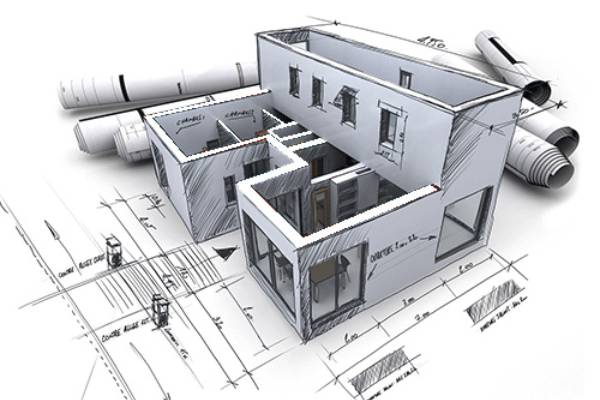In the ever-evolving field of architecture, staying ahead of the curve is crucial for success. One such technological advancement that has revolutionized the architectural design process is Building Information Modeling (BIM). From conceptualization to construction, BIM has emerged as a powerful tool, enhancing collaboration, efficiency, and overall project outcomes. In this blog, we will delve into the various stages of Architectural BIM, exploring how BIM transforms ideas into reality.
Conceptualization
Defining the Vision
At the heart of any architectural project lies a vision – a concept that drives the entire design process. BIM serves as the catalyst in translating abstract ideas into tangible plans. Through 3D modeling and visualization, architects can bring their concepts to life, allowing stakeholders to better understand the proposed design.
Collaborative Ideation
BIM facilitates collaborative ideation by enabling architects, engineers, and other stakeholders to work concurrently on a shared digital platform. This collaborative approach enhances communication and ensures that all team members contribute to refining the initial concept. The result is a more comprehensive and well-thought-out design.
Schematic Design
Iterative Development
During the schematic design phase, architects often need to iterate and refine their ideas based on feedback and changing requirements. BIM’s parametric modeling capabilities allow for quick adjustments and iterations, significantly reducing the time spent on design modifications. This iterative development process ensures that the final design aligns seamlessly with the project goals.
Data Integration
BIM goes beyond traditional 3D modeling by incorporating data-driven elements. Architects can integrate various data sources, including cost estimates, material specifications, and energy analysis, into the BIM model. This integration not only streamlines decision-making but also provides a holistic view of the project, allowing architects to make informed choices that align with both design and practical considerations.
Design Development
Clash Detection and Resolution
As the design progresses, the potential for clashes and conflicts among different building systems arises. BIM’s clash detection capabilities enable architects to identify and resolve these issues before they become costly problems during construction. This proactive approach minimizes errors, reduces rework, and ensures a smoother transition from design to construction.
Enhanced Visualization for Client Engagement
Client engagement is a critical aspect of the design development phase. BIM’s advanced visualization tools empower architects to create realistic renderings and virtual walkthroughs, enabling clients to experience the proposed design in detail. This not only fosters a deeper understanding but also allows clients to provide valuable feedback, ensuring that the final design meets their expectations.
Construction Documentation
Accurate and Consistent Documentation
Creating comprehensive construction documentation is a fundamental aspect of architectural design. BIM automates the generation of construction documents, ensuring accuracy and consistency across drawings, schedules, and specifications. This not only saves time but also minimizes the risk of discrepancies that could lead to construction errors.
Quantity Takeoffs and Cost Estimation
BIM’s ability to associate data with geometric elements extends to quantity takeoffs and cost estimation. Architects can extract accurate quantities of materials directly from the model, streamlining the estimation process. This data-driven approach enhances cost control and budget management, providing a more transparent overview of the project’s financial aspects.
Construction
Streamlined Coordination
During the construction phase, effective coordination among various stakeholders is crucial for project success. BIM acts as a centralized platform where architects, contractors, and subcontractors can collaborate in real time. This streamlined coordination minimizes communication gaps, reduces delays, and ensures that everyone is working from the most up-to-date information.
Project Lifecycle Management
BIM’s impact extends beyond the construction phase to the entire lifecycle of the building. Architects can use the BIM model for facility management, maintenance, and renovations. This holistic approach enhances the long-term sustainability and efficiency of the structure, aligning with the growing emphasis on sustainable architecture.
Conclusion
In conclusion, Architectural BIM has transformed the design process from concept to construction. Its ability to integrate data, streamline collaboration, and enhance visualization has become indispensable for architects striving to create innovative, efficient, and sustainable designs. As technology continues to advance, embracing tools like BIM becomes not just a choice but a necessity for architects looking to shape the future of the built environment.

